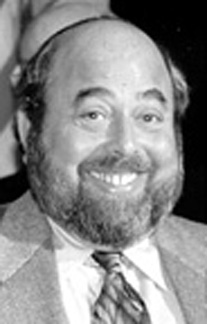Reviewed by Donald
H. Harrison
Carlsbad, CA (special) -- Rabbi Wayne Dosick and his wife Ellen Kaufman
lost their home in the 1996 Carlsbad fire, prompting him to write this
book, his fifth. When Life Hurts, a chronicle of his emotional journey
as well as a distillation of theological and lay literature on the issue
of suffering, is comforting and thought-provoking.
Filled with anecdotes, Dosick's book is the kind from which a reader
can
pick and choose. Three discussions in particular impressed me; other
readers--depending on their interests or situation -may have different
responses.
 |
After sifting through the ashes of his home--trying to
rescue memories and artifacts--Dosick received a present from a woman who
had gone to schoolwith him. In a loose leaf notebook, she had assembled
a photocopied
version of their high school yearbook, and "gave me back a tiny bit
of my
history," Dosick wrote. What a thoughtful gesture!
Much later in the book, Dosick, who is spiritual leader of the Elijah
Minyan, recounted the story of Joseph from the Book of Genesis. He
suggested that if Jacob had not favored son Joseph by giving him the
coat
of many colors, today there might not have been a Jewish people.
Huh? Well, if Joseph hadn't received the coat, his brothers might not
have |
| Rabbi Wayne Dosick |
become jealous. He wouldn't have been sold into slavery. He wouldn't
eventually have become an advisor to the Pharaoh. He wouldn't have been
in a position to counsel Egypt to store up grain for the seven years of
famine. And Jacob and his other sons might have died in the famine.
"Living their story, Joseph and his family experienced the suffering
and
the pain of each incident," Dosick wrote. "They didn't have the
perspective that we do...They could not, as we can, see the 'big picture,'
the gigantic canvas on which the whole story plays out from beginning
to
end."
Neither can we, in the throes of our suffering, expect to be able to
understand God's design, Dosick writes. But suffering may well have
a
grand if unknowable purpose.
The third "snapshot" from Dosick's book that stays with me is a story
about Yitzhak Perlman, who after coming onto the stage so laboriously in
his leg braces, broke a string of his violin.
Rather than send someone for a new string and delay the concert, Perlman
signaled the conductor to continue. Minus one string, Perlman nevertheless
managed to compensate for the music, and played stunningly. As one, after
a moment of awe, the audience rose in a standing ovation not only for the
music but in honor of Perlman's pluck. Perlman then told them, "You know,
sometimes it is the artist's task to find out how much music you can still
make with what you have left."
So it may be, too, for people who have suffered tragedy, Dosick tells
us. |

